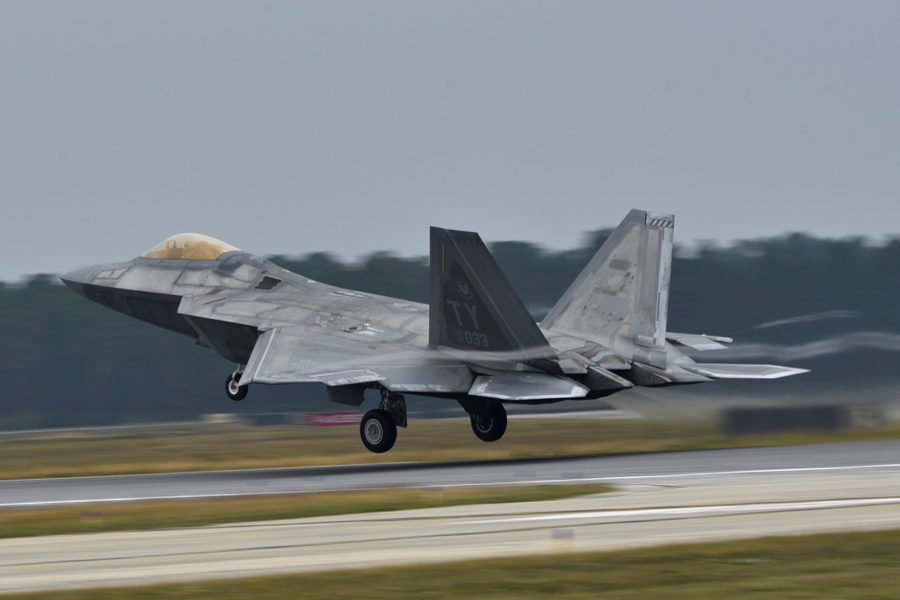A maintenance error, committed after an F-22 was washed, affected its control inputs and caused the Raptor to crash May 15, 2020, at Eglin Air Force Base, Fla. The pilot safely ejected, but the aircraft was totaled, with an estimated loss of $201 million, according to Air Combat Command.
ACC released limited information on the crash despite the significant loss to the Air Force’s fifth-generation fighter fleet, because unlike most major mishaps, the command did not conduct a publicly releasable investigation.
In a statement, the command said that “due to operational concerns,” ACC directed a Safety Investigation Board and a Commander Directed Investigation into the crash and did not complete an Accident Investigation Board report. The AIBs typically detail the circumstances concerning a crash as well as the AIB president’s determination of the cause.
The other two types of investigations are not released, so the limited information in a press release is the extent to which ACC is telling the public about what happened to the F-22. The Northwest Florida Daily News was the first to report on the cause of the crash.
Air Force Instruction 51-307 governs the Air Force’s aerospace and ground accident investigations. It requires the publicly releasable AIB for on-duty Class A mishaps—defined as incidents that cause a loss of life or more than $2.5 million in damage. But there’s an exception.
“This requirement may be waived by competent authority,” an ACC spokesperson said in a statement to Air Force Magazine. “In the case of the May 15 incident, the convening authority, ACC’s deputy commander, was the waiver authority for this provision. With the concurrence of Air Force Judge Advocate, who was the AFI approval authority, ACC’s deputy commander waived the requirement for an AIB.”
ACC said the Safety Investigation Board and the Commander Directed Investigation were “conducted to determine the cause of the accident and to prevent future mishaps.”
The full description of the crash is: “Upon takeoff, the pilot noticed a Flight Control System advisory and elected to continue with takeoff. Shortly after the aircraft became airborne, the pilot began having trouble controlling the aircraft and declared an emergency. While a recovery plan was being coordinated, the pilot continued to have issues with the aircraft and ejected.”
The pilot, who was assigned to the 43rd Fighter Squadron, 325th Fighter Wing, sustained minor injuries in the ejection. The incident was one of two involving fifth-generation fighters at the base. Less than a week later, on May 19, 2020, an F-35 crashed at Eglin. An AIB into that mishap stated that excessive landing speed, exacerbated by issues with the pilot’s helmet-mounted display, caused the crash.
Even though Air Education and Training Command conducted an AIB to investigate the second incident, the F-35 Joint Program Office said any corrective measures from the crash would remain secret.
While most Class A mishaps result in publicly released reports, it is not clear how often commanders waive the requirement to provide the public with the investigation. In fiscal 2020, the Air Force reported 29 total Class A mishaps with 14 aircraft destroyed. The public repository for AIBs lists nine reports for the destroyed aircraft. Air Education and Training Command did not conduct an AIB for an Afghan Air Force A-29 Super Tucano that crashed in Afghanistan since USAF did not own the aircraft. It is not clear what the remaining aircraft are.

